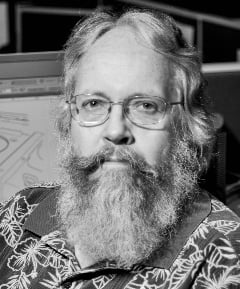
president of the Historical Society
of the Crescenta Valley and loves local history. Reach him at
lawlerdad@yahoo.com.
Tuna Camp’s Historical Status Threatened
The internment of America’s Japanese-descended population during WWII is still highly controversial today. It was one of the darkest chapters in America’s history. Many don’t realize that a key element of this episode took place right here in the Crescenta Valley.
“Tuna Camp” was a Civilian Conservation Corp camp on the western end of the Crescenta Valley, today the site of the Verdugo Hills Golf Course. The day after Pearl Harbor it was taken over by the government and shrouded in barbed wire, watchtowers and secrecy. As the FBI rounded up the leaders in L.A.’s populous Japanese communities by the hundreds (along with some Germans and Italians), they were imprisoned at Tuna Camp. They arrested political figures, religious leaders, Japanese teachers, those with military backgrounds, and martial arts teachers and students. This served two purposes. It locked up the most likely suspects to commit espionage, but it also removed those most able to lead a resistance to the round up and imprisonment of the thousands of Japanese-American families left behind. No one can deny that the former Tuna Camp at today’s Verdugo Hills Golf Course is one of the most important sites regarding WWII history in the L.A. area. Yet there is no marker or monument there.
Fast forward to today’s Verdugo Hills Golf Course, where a developer has been warming up his bulldozers in preparation to build 224 new homes on the site. The developer has always been aware of the historical significance of the land. Since 2006, community groups under the leadership of Tujunga’s Lloyd Hitt have been pushing for the developer to allow some sort of monument at the development – all to no avail. I remember the first attempt in which scores of support letters from Japanese-American groups and historical societies were gathered and sent to the developer. This was met with stony silence – not even an acknowledgement.
As the years went by, the community has become more forceful with the developer, to the point where last year, over the objections of the developer, the L.A. City Council declared the site an L.A. City Historic-Cultural Monument. This would not restrict the developers building plans, but it did force him to the table to negotiate a monument site. Under the city’s direction, a meeting was set up between the developer, the community and Japanese-American groups to formulate a plan to set aside land where the public could visit a monument.
At this point the developer dropped a bomb on the proceedings. There would be no public access to the monument because his development was to be a private gated community, and the entire area was to be walled in.
He has that right. Historic landmark or not, it’s still private property. After a few more meetings it was finally agreed that the developer would put aside a small area next to La Tuna Canyon Road that would be outside the wall and open to the public. The developer even went so far as to have his architect draw up plans for the monument, which he presented at the last meeting of the group. The negotiations were successful and an accord had been reached that made everyone happy.
At the end of the meeting the developer dropped his second bomb. As the group was preparing to leave, the developer’s attorney announced that the developer would be filing a lawsuit against the city to remove the historical status, and all deals are off. Apparently the developer had planned this all along and was merely pretending to negotiate.
At least now we know now how this developer operates.
If you’d like to learn more about Tuna Camp, Lloyd Hitt will be talking about its history, and his frustrating crusade to establish a monument at the next meeting of the Historical Society of the Crescenta Valley. The centerpiece of his presentation will be to show photos taken inside the camp during WWII, amazing never-before-seen shots that have just surfaced. They’ll be shown this Monday, Oct. 21 at 7 p.m. at the Center for Spiritual Living at the intersection of Dunsmore and Santa Carlotta, 4845 Dunsmore Ave. in La Crescenta.
